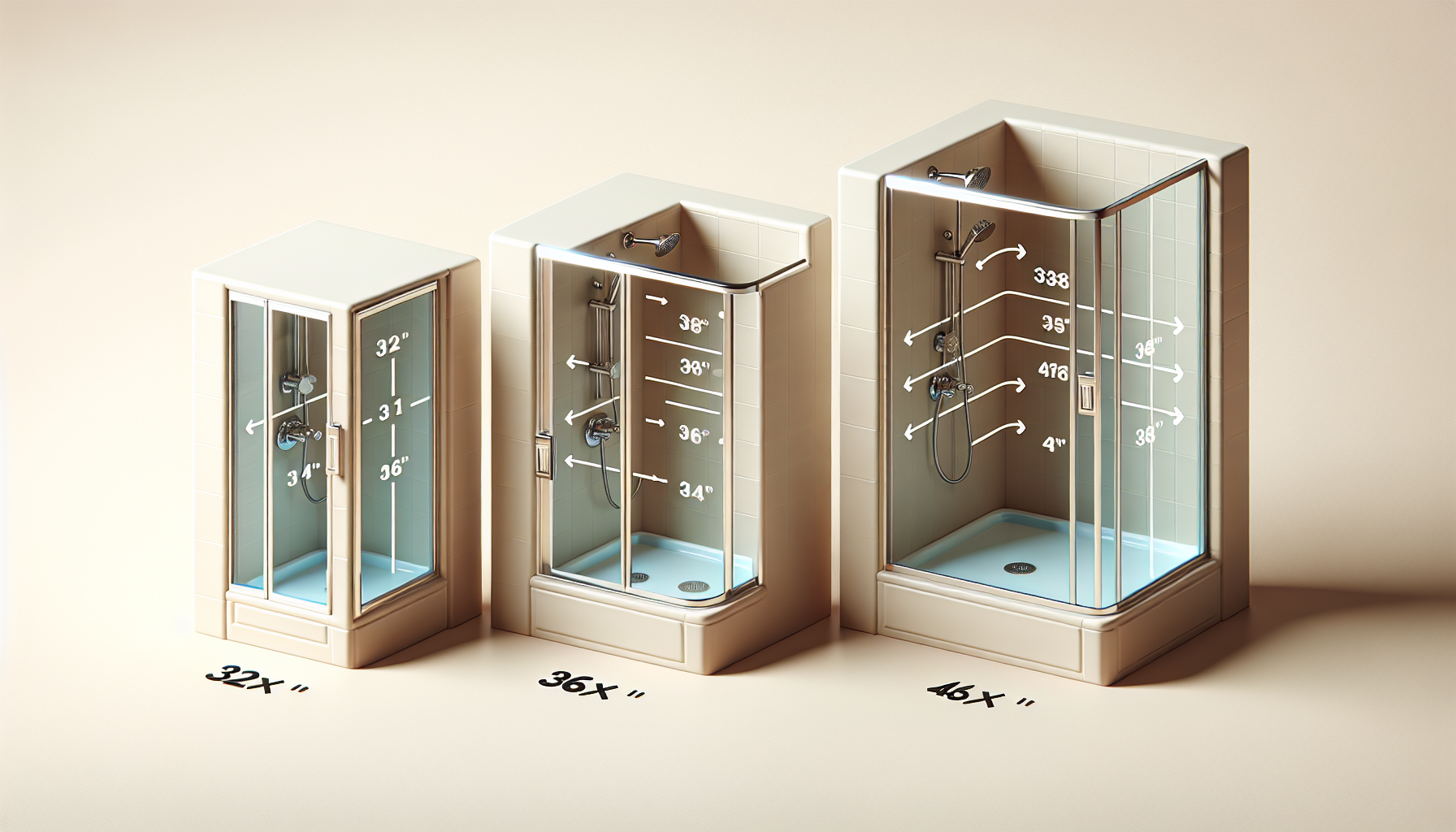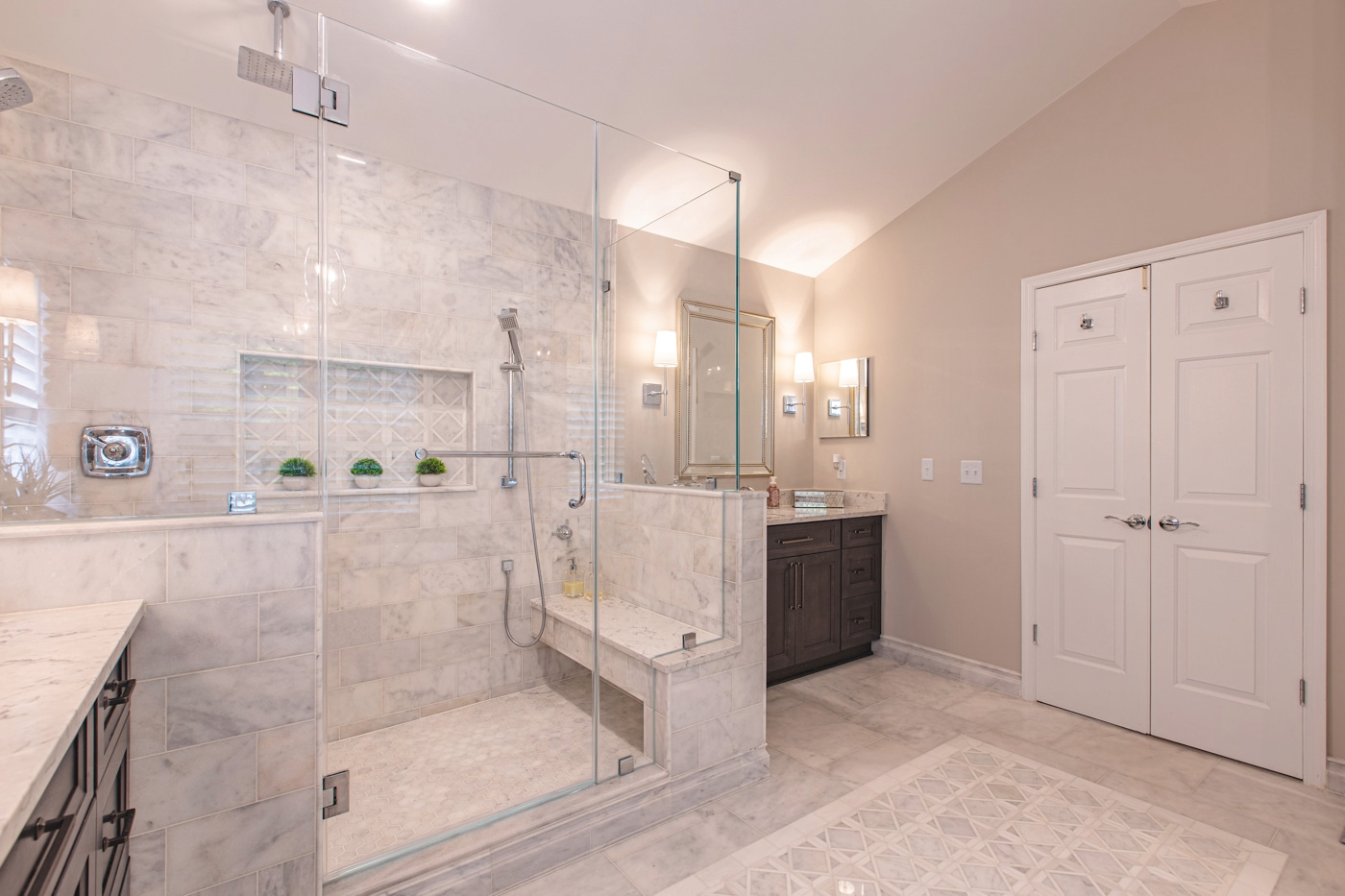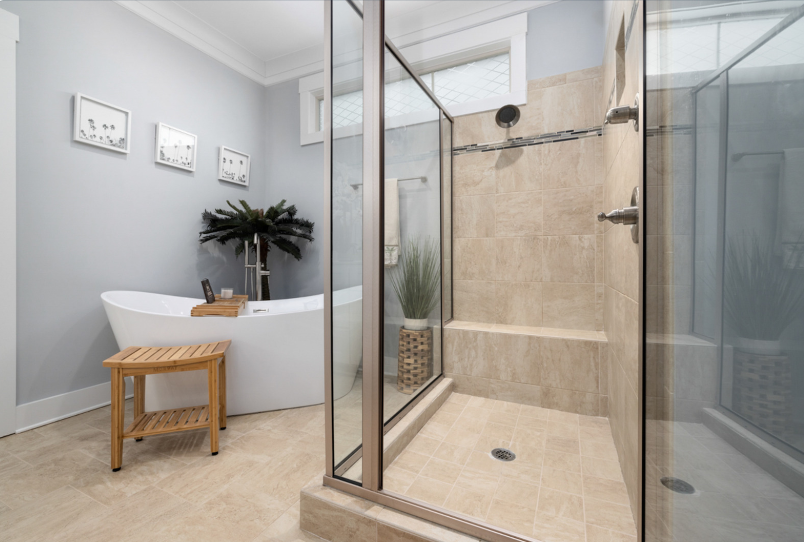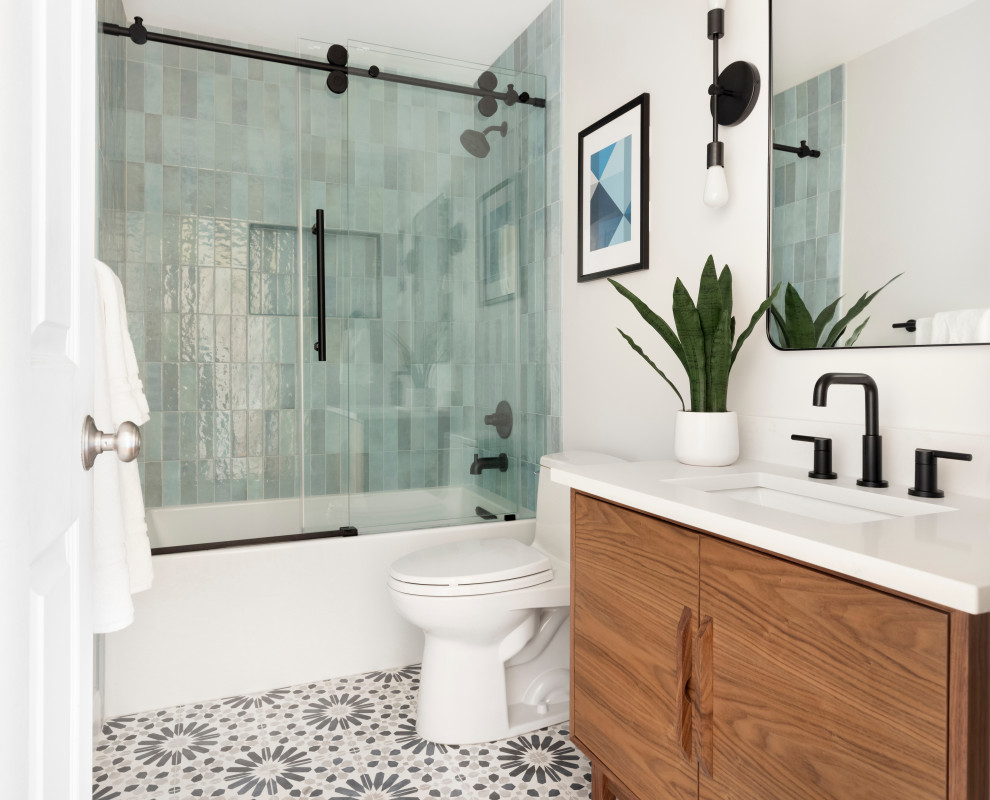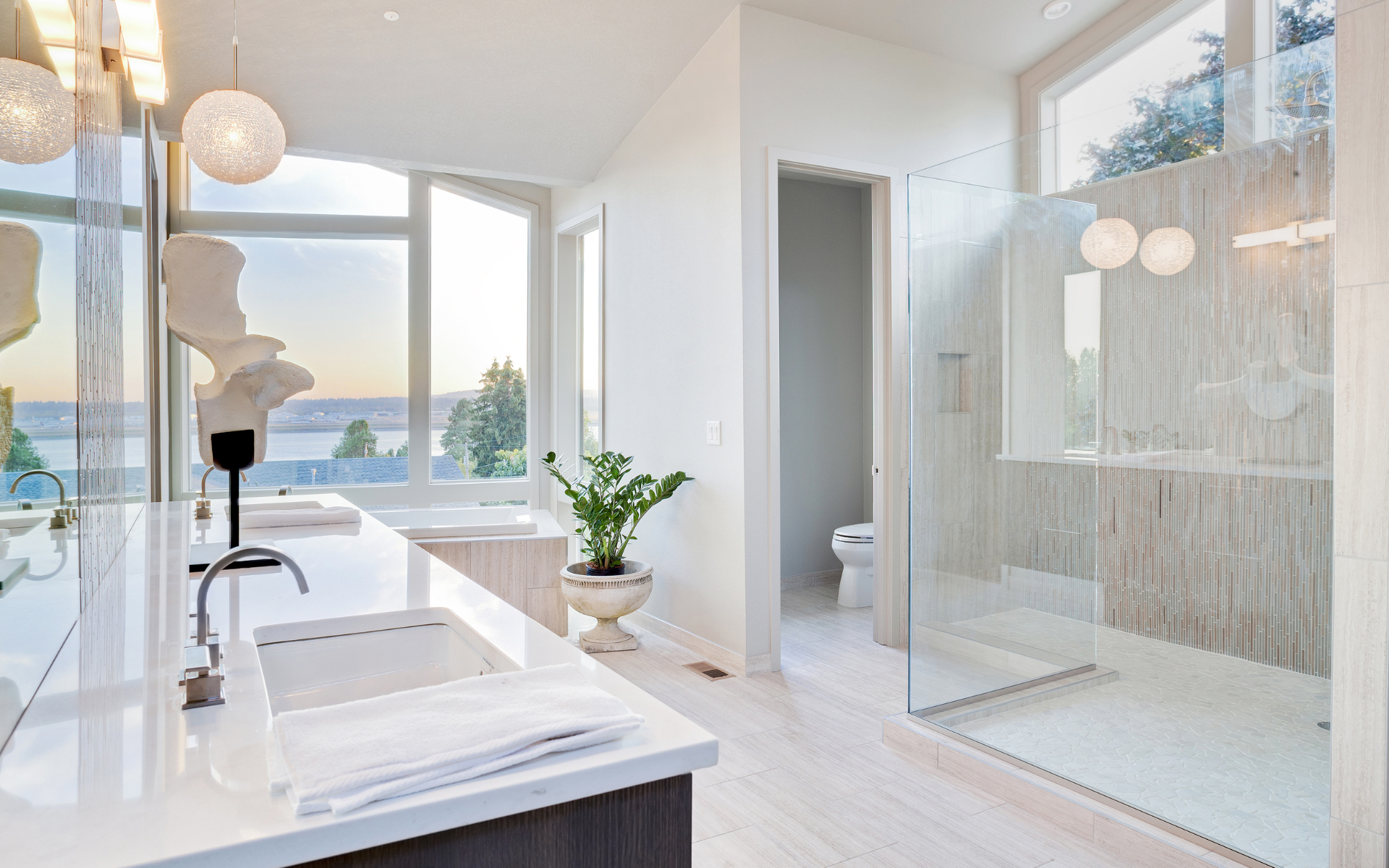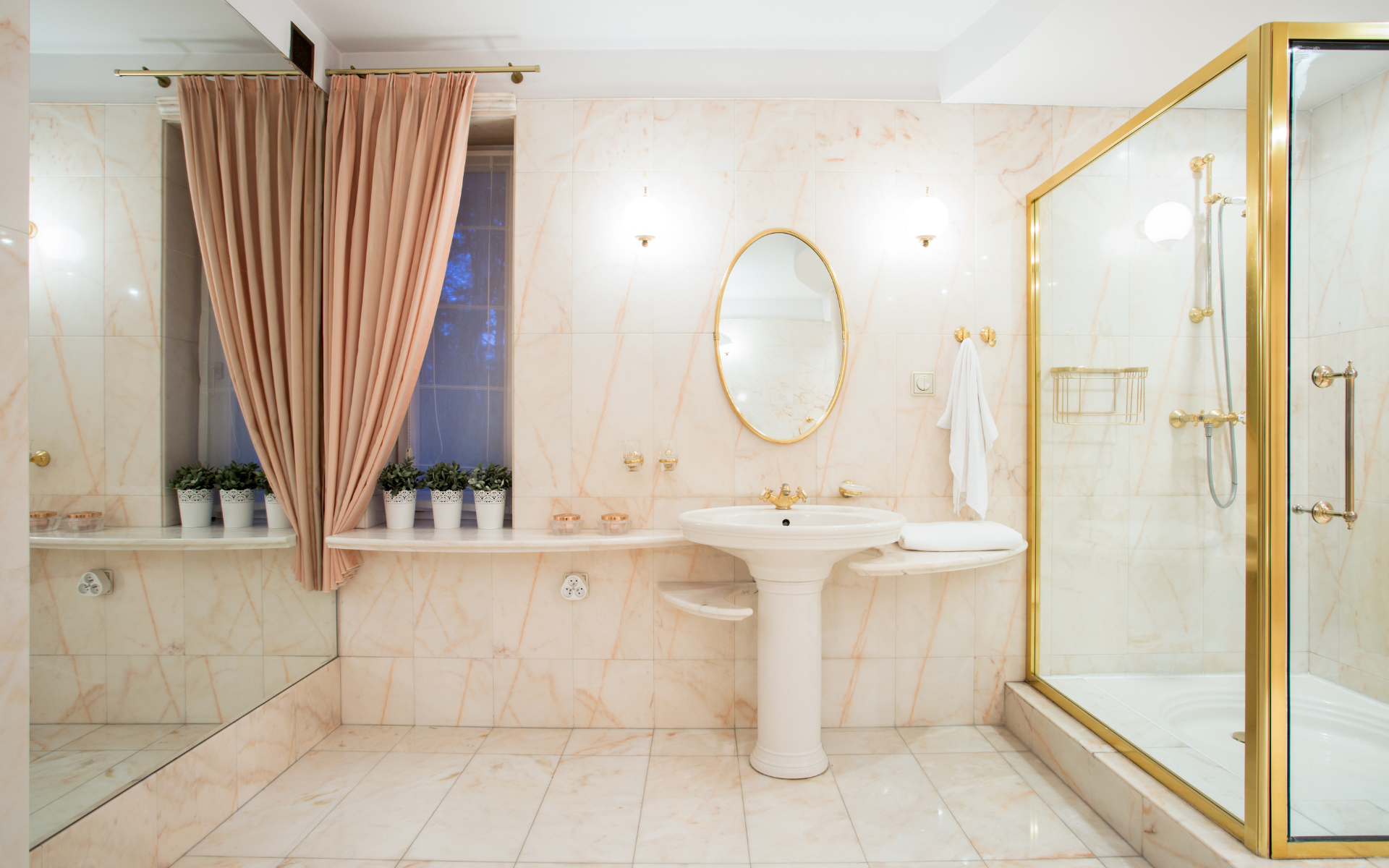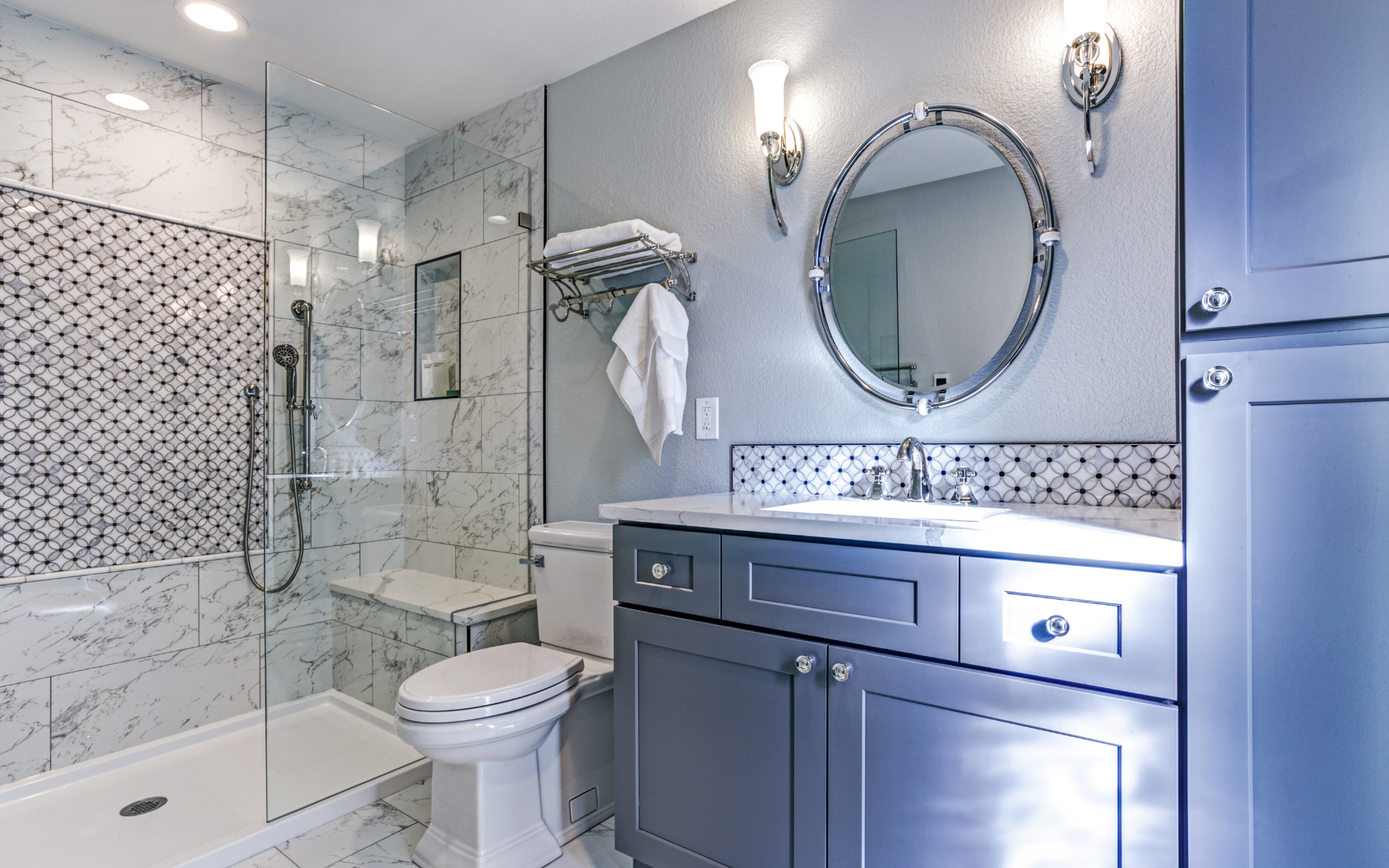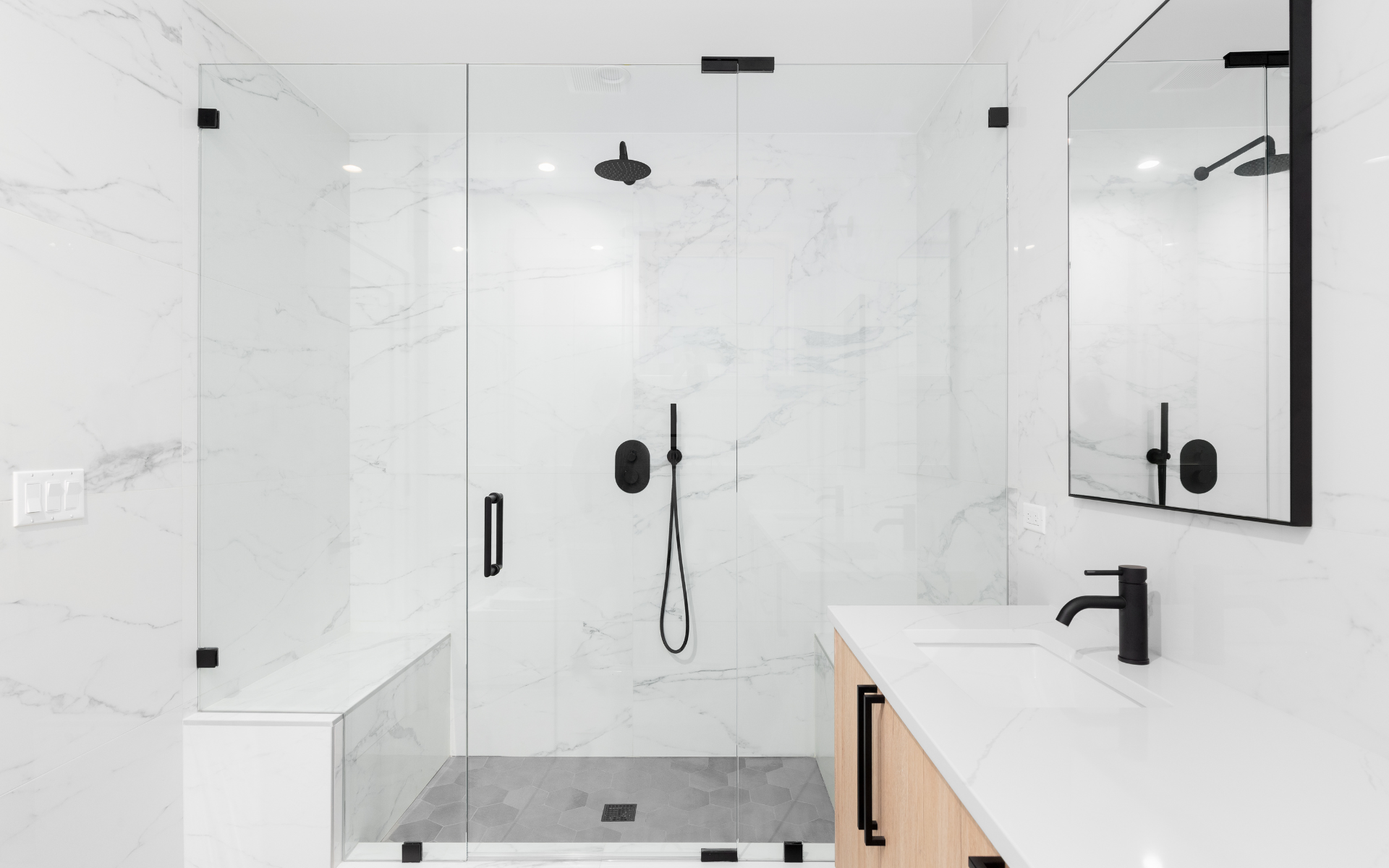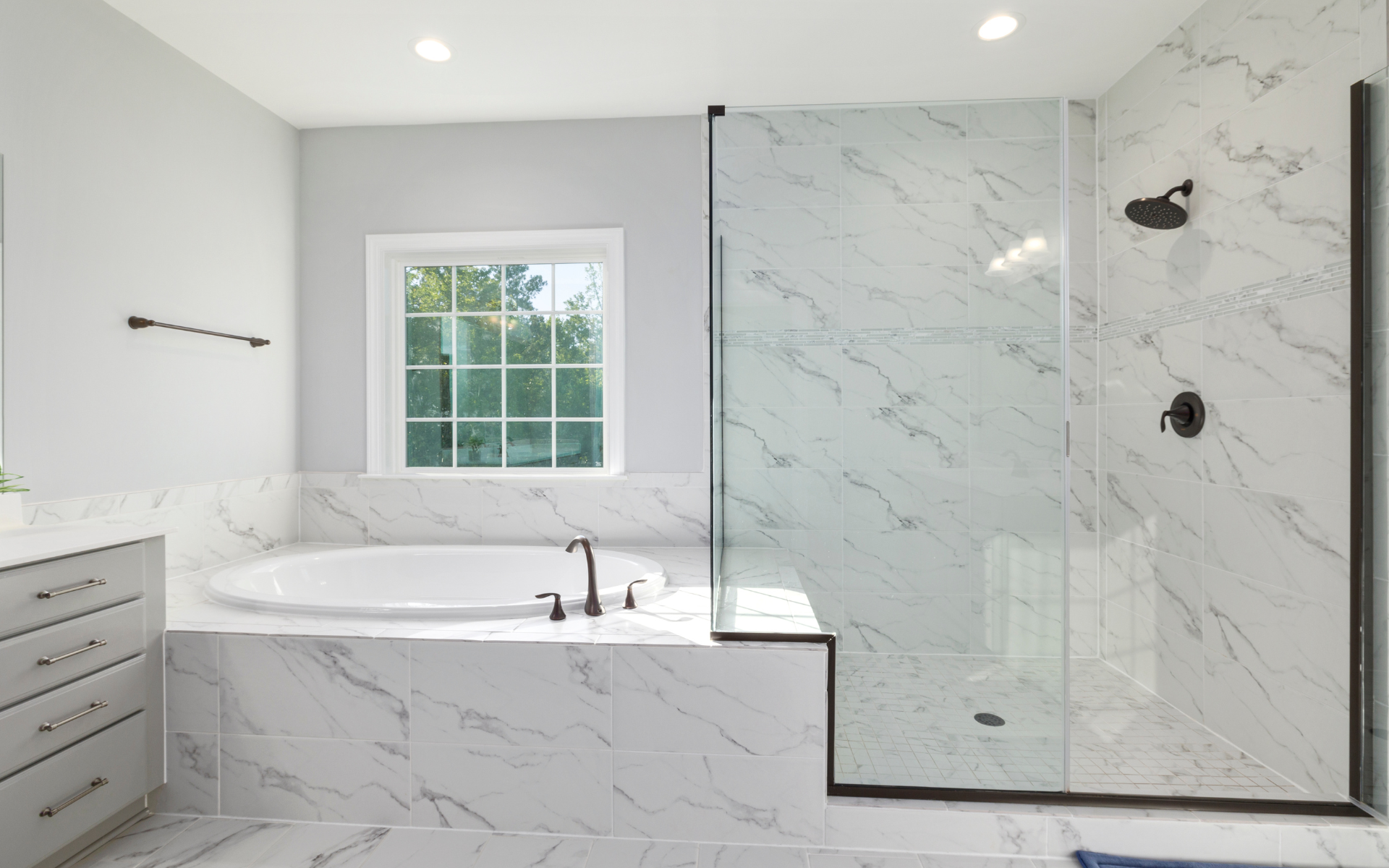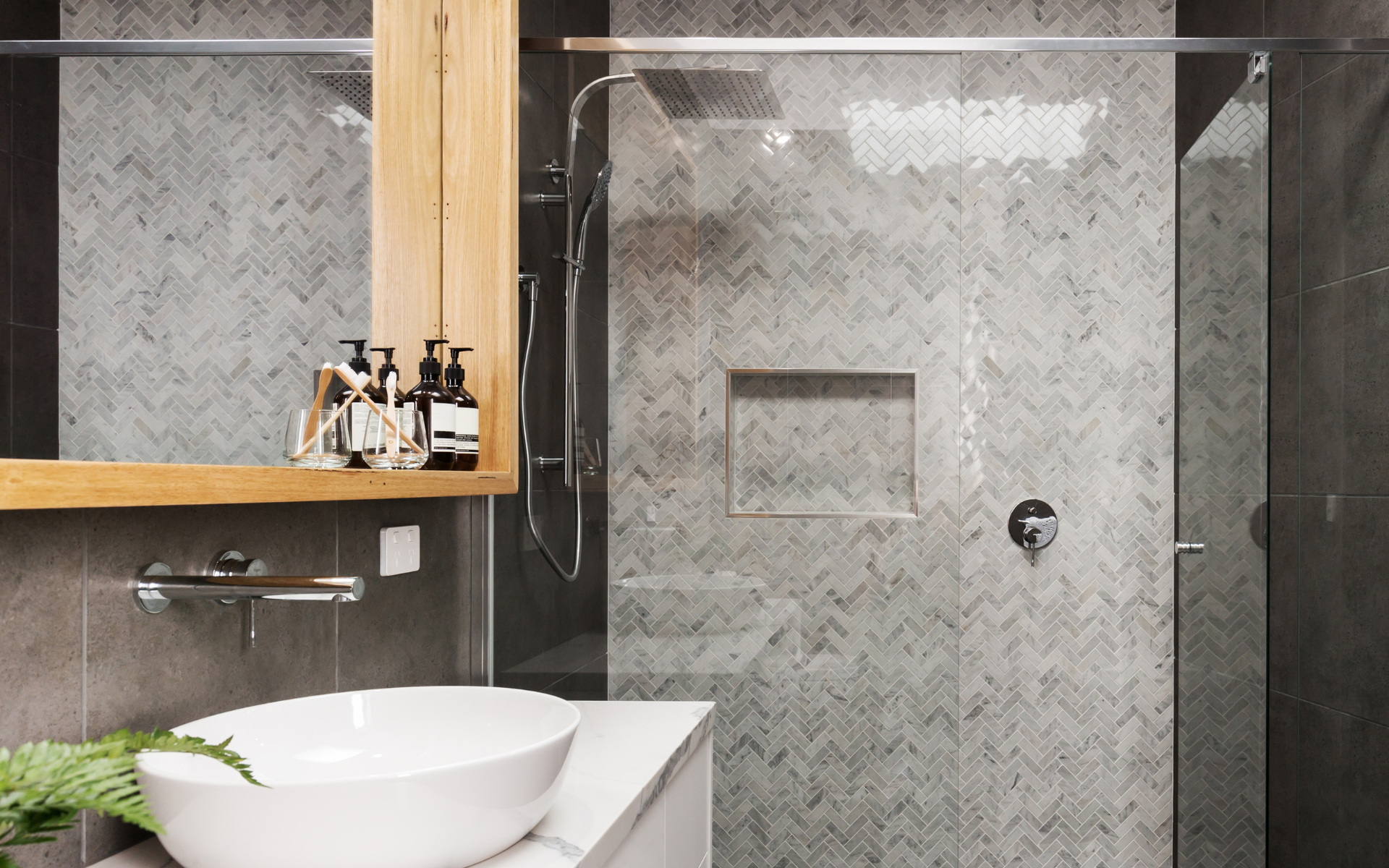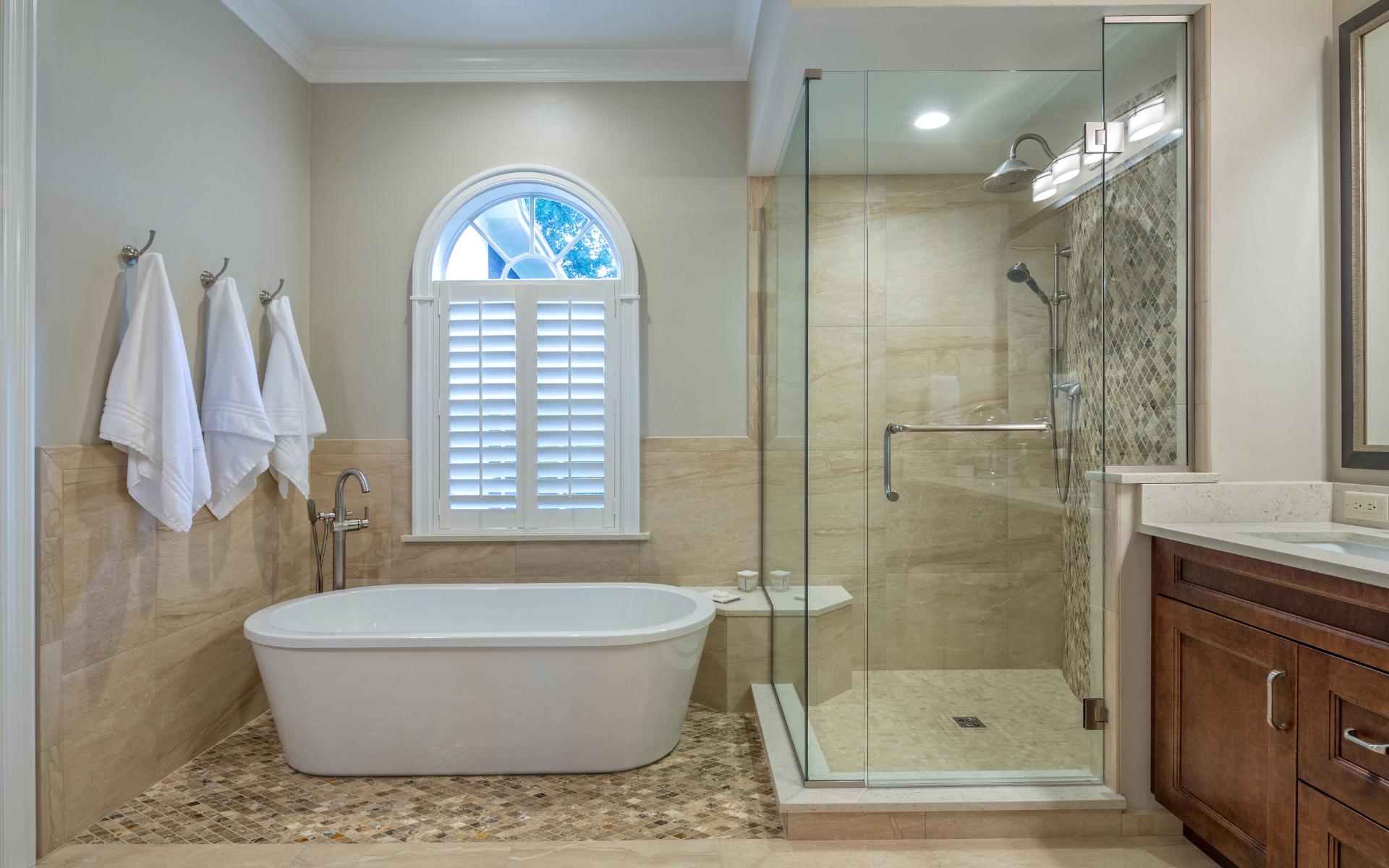
Navigating the world of standard shower sizes can be complex, whether you’re remodeling or building anew. Sizes like a compact 32×32 inch or a spacious 48×48 inch determine the layout and how enjoyable your shower experience will be. This guide demystifies dimensions, aligns them with building codes, and helps you envisage the perfect fit for your bathroom.
Table of Contents
Key Takeaways
- Standard shower sizes vary from small 32×32 inches to larger dimensions like 48×48 inches, with recommendations from the International Residential Code starting at a minimum of 30×30 inches for functionality and comfort.
- A range of shower types, including prefabricated, walk-in, corner showers, and shower-tub combos, accommodate different bathroom sizes and preferences, each presenting unique installation benefits and space optimization.
- When choosing a shower size and design, personal comfort, bathroom layout, remodeling costs, and environmental considerations are paramount, alongside specific components like shower doors, bases, and ADA compliance.
Understanding Standard Shower Sizes
Knowing the standard dimensions for shower spaces can be incredibly useful when planning a bathroom. These sizes vary, starting from a snug 32×32 inch area up to larger expanses of 48×48 inches, providing choices that can accommodate different bathroom designs and individual tastes. Understanding the range of standard enclosure shower sizes is crucial whether you’re looking to replace an existing unit or are planning a new shower installation. It simplifies your decision-making process and ensures your chosen size complements the overall layout of your bathroom.
Before hiring a kitchen and bath contractor, you need to consider first your shower dimensions, both functionality and compliance with regulations play significant roles. The International Residential Code stipulates that showers must have at least 30 inches by 30 inches of space as a minimum requirement. Yet many people prefer roomier configurations such as those measuring 48 inches by 36 inches due to the comfort level they provide during use. Ultimately, finding this balance — where legal requirements meet personal comfort within an interior shower environment — is key to creating not just any functional bathing area but one that affords ample space for relaxation and ease within its confines.
Prefabricated Showers
Prefabricated shower enclosures provide an economical and straightforward solution for enhancing your bathroom space. These units come in various standardized dimensions to easily integrate into a range of bathroom layouts, eliminating the need for extensive tailored adjustments. Prefab showers cater to both modest-sized powder rooms with options as small as 32×32 inches and more spacious bathrooms requiring larger sizes up to 36×60 inches.
The appeal of these shower enclosures extends from their cost-effectiveness to their user-friendly installation process. Offering an assortment of designs, some include convenient features such as built-in shelves or amenities conducive to a relaxing bath experience—upgrading your shower can be accomplished without stretching your budget excessively. It is imperative to choose a size appropriate for your specific bathroom area so that it enhances rather than dominates the available space.
Walk-in Showers
Walk-in showers are the height of modern bathroom sophistication, combining ease of access with a design that can be tailored to individual tastes. These showers accommodate various preferences starting from a compact dimension recommendation of 36×36 inches for those desiring simplicity. For individuals who have more space available, there is an array of larger sizes such as 60×42 inches, which may even include seating for additional comfort. The typical size for an average walk-in shower strikes a balance between these extremes, offering both convenience and elegance.
For custom-tiled walk-in showers, creativity knows no bounds as they can be configured to align with nearly any bathroom configuration imaginable. Standard dimensions begin at 36 inches by 42 inches but can stretch out to ample proportions like 48×48 inches or greater if desired. This versatility empowers homeowners to craft not merely a utilitarian spot for bathing, but also transform their shower into a bespoke retreat designed for maximum relaxation and personal indulgence.
Corner Showers
Corner showers excel in maximizing usable floor space within a compact bathroom, seamlessly fitting into the corner. Typically starting at an unassuming 32×32 inches in size, these units can surprise you with ample showering room. This is thanks to innovative designs like curved fronts or neo-angle bases that may stretch up to 42 inches across.
Adopting a corner shower into your bathroom’s design brings numerous advantages.
- The presence of clear glass doors enhances the feeling of spaciousness.
- They are designed to house neo-angle shower bases spanning from 36 inches up to an expansive 60 inches.
- Corner showers provide both an elegant and efficient solution for bathrooms where space is at a premium.
Shower-Tub Combos
Combining the functionality of both a shower and a bathtub, shower bathtub combo units serve as an ideal fixture for those who appreciate having the choice between an expeditious rinse or a prolonged bath. The smallest standard dimensions available for such hybrids typically measure 60 inches in width by 30 inches in depth by 72 inches in height, whereas larger variations offer more room with measurements around 60x36x72 inches.
These hybrid units are especially beneficial to households with varying bathing preferences, serving multiple family members’ needs. Houses equipped with at least one tub Secure better prospects when placed on the market due to their appeal among prospective buyers. To house both features efficiently—a full-sized tub alongside a shower—these combined fixtures do necessitate somewhat broader proportions compared to solo bathtubs.
Key Components Affecting Shower Size
The dimensions of a shower are important, but its functionality and how it fits into the bathroom are also determined by several key elements. These include the selection of shower doors with various sizes and styles, choosing an appropriate shower base, as well as adding features such as benches for comfort. For individuals in need of accessibility options, ADA-compliant showers have particular size guidelines to promote safe use.
Shower door dimensions play a critical role in both aesthetics and utility within your bathroom space.
- Standard-sized shower doors can vary from 22 inches wide for smaller enclosures up to 36 inches wide allowing comfortable entry.
- Frameless shower doors provide an elegant appearance along with versatility in sizing that contributes to their modern look.
- Beyond just considering interior design aspects like style or space utilization inside the enclosure. Attention should be paid during installation regarding extra room needed around frames and measures against water spillage outside the unit.
Shower Doors
Choosing the appropriate shower door is crucial for both functionality and safety within a shower. Hinged doors typically range from 22 to 36 inches in width, while sliding doors span widths of 45 to 59 inches, providing an array of options for various shower dimensions and styles. Sliding doors are particularly advantageous for smaller spaces since they do not need clearance to swing open like hinged doors. Frameless doors can be custom-sized up to a height of 82 inches by a width of 60 inches for those needing tailored solutions.
Yet size isn’t the sole consideration. The design elements such as towel bar handles or streamlined shower knobs play key roles in augmenting bathroom ease and efficiency. One must select a door that not only aligns with the specific measurements but also elevates functional flow whether installed on an intimate corner-mounted shower unit or incorporated into an expansive walk-in shower setup.
Shower Bases
At the heart of any standard shower is the shower base, whose size plays a critical role in defining the final dimensions of the shower itself. Commonly, these bases are available in sizes like 32×32 inches and 36×36 inches to suit diverse bathroom layouts comfortably. The breadth of a shower threshold can vary between 30 and 60 inches, shaping both how wide the shower will be as well as its fit within the existing bathroom space.
The choice of material for your shower base is important too. From economical acrylic and fiberglass options to luxurious natural stone variants, each brings its unique attributes with regards to longevity, ease-of-care, and price point – all contributing factors that influence not just sensory experience but also play into considerations for your overall budget during a bathroom remodel.
Shower Benches
A bench in a walk-in shower is not merely a place to sit. It enhances the comfort and practicality of the bathing experience. The general guideline for sizing these benches is that they should be approximately double the length of your shower area, providing plenty of room both for relaxation and practical use. This setup allows users to indulge in a luxurious, spa-like shower or have access to needed support if stability while bathing is an issue.
When incorporating a bench into either a standard walk-in shower or one designed to meet ADA standards, its impact on the overall dimensions must be taken into account. This feature must be seamlessly integrated so as not to compromise ease of use or comfort but also fit within the existing layout of your walk-in unit. Proper design ensures that such showers offer dual benefits: being sanctuaries for unwinding as well as accommodating spaces tailored for those with accessibility needs.
ADA-Compliant Showers
Inclusive design is at the heart of ADA-compliant showers, which are crafted to ensure that individuals of all abilities can have a safe and comfortable experience while showering. A roll-in shower must have minimum dimensions of 30 inches by 60 inches to suit the turning radius needed for wheelchair accessibility. Should there be a need for more space within the shower area, it should extend minimally to an expanse of 36 inches in both width and depth, thus providing adequate room for movement.
Such inclusive showers necessitate an entryway free from barriers. They must either incorporate zero-threshold access or feature only a minimal threshold height so wheelchairs can enter unimpeded. Safety within this carefully considered shower space requires appropriately positioned grab bars installed at specified heights and places as per guidelines.
By integrating these aspects into their design specifications, ADA-compliant showers facilitate not just standardization in terms of size, but also promote inclusivity and functionality—catering equally to those with disabilities as well as others without any compromise on comfort or safety.
Factors to Consider When Choosing a Shower Size
When choosing the appropriate shower size, one should consider more than simply accommodating it within the existing bathroom area. The selected shower must cater to user preferences and harmonize with the overall design of the bathroom. It should serve as a personal haven that mirrors how users live – whether they prefer an efficient corner unit for quick showers or desire a roomy walk-in for indulgent relaxation sessions. Attention needs to be paid to elements like bathroom configuration, comfort during use, and aesthetic considerations to foster a cohesive and practical space.
In evaluating various shower sizes, careful thought must go into understanding how much space is at hand in conjunction with the layout of the entire bathroom. How will this new addition integrate? Is there ample room not just for installation, but also for easy entry and exit? Addressing these inquiries helps ensure that whatever choice is made regarding size matches well with both functionality and style aspects of your whole bathing area. Adding value not only through utility but also by augmenting its visual appeal.
Bathroom Space
Accurately sizing up the available area within a bathroom is crucial when selecting an appropriate shower dimension. This process involves more than simply calculating the room’s total area. Consideration must be given to how seamlessly the shower will fit alongside other elements in the space. For bathrooms with limited square footage, corner showers are often a wise option as they conserve valuable floor space while imparting a contemporary aesthetic. It’s also important to ensure that there’s sufficient room leading up to the shower entrance for comfortable entry and adherence to construction regulations.
When dealing with more spacious bathrooms, homeowners have greater leeway to consider expansive walk-in showers or sizable combos of showers and bathtubs. Thoughtful planning of these layouts can yield an atmosphere that is both airy and welcoming, no matter what size the chosen shower may be. Employing light hues and installing mirrors can amplify this spatial perception Transforming even modestly sized bathrooms into areas that feel grander and steeped in luxury.
User Comfort
When choosing the size of a shower, user comfort is crucial. The shower should serve as a sanctuary where individuals can relax and relax without feeling confined. A dimension of 48 x 48 inches for the shower space is commonly recommended to ensure ample room for movement or to accommodate two people at once comfortably. It’s important that within this space, users have enough clearance to extend their arms freely without making contact with walls, enhancing the overall sense of spaciousness and ease.
Due to its size, the comfort level in a shower also involves various features it might offer. Larger showers open up possibilities like installing multiple heads, incorporating built-in seating options, or even steam functions which elevate the area into an indulgent spa-like retreat. Tailoring these elements according to individual tastes and preferences regarding accessories and conveniences is vital in creating a customized shower environment that thoroughly satisfies each user’s requirements.
Design Elements
The design elements incorporated into a shower can significantly enhance its functionality and aesthetic appeal. Some key design elements to consider include:
- Built-in features like shelves or seating to maximize utility without taking up additional space
- The choice of shower door handle, which can add a touch of style and functionality
- The size and pattern of tiles used can create a visually appealing and cohesive look
- The color palette chosen, can set the mood and create a cohesive design scheme
By carefully considering these design elements, you can create a rectangular shower that is both visually stunning and highly functional, complete with a stylish shower curtain and a sturdy shower rod.
When planning a shower, it’s important to consider how these design elements will interact with the shower’s size. Some tips to keep in mind are:
- Vertical tiles can make a shower appear taller
- Larger tiles with fewer grout lines can create a cleaner look
- A coherent color scheme and material selection can make a small shower feel spacious or turn a large shower into a statement piece within the bathroom.
Shower Remodeling Costs by Size
The dimensions of a shower play a significant role not only in its practicality and look, but also influence the overall shower remodeling costs. Points to consider include:
- Walk-in showers are More expensive due to their larger size, requiring more materials and intricate installation processes.
- Adding custom elements like tile patterns or natural stone surfaces can escalate the expenses even further.
- Choosing prefabricated units may provide an economical option compared to customized designs.
When planning finances for revamping a shower, it’s important to account for various potential expenditures such as:
- The foundation of the shower
- Wall tiles
- Glass enclosures
- Measures for water resistance
- Any specialized features
Typically, upgrading to a walk-in shower is estimated between $3,500 and $15,000. When switching from tubs to walk-ins, there might be an extra cost ranging from $500 up to about $1,000 added to your budget. Bear in mind that indirect costs such as permits required by local regulations, eliminating mold issues if present, and debris removal fees can all contribute towards increasing the total investment necessary for completion.
Environmentally Friendly Shower Options
In the contemporary world, our eco-consciousness permeates even our bathroom habits. It’s becoming essential to select a shower that provides both comfort and environmental benefits. Standing showers are an ideal sustainable selection for those environmentally aware homeowners because:
- They consume less water to take baths.
- Features such as low-flow showerheads can be installed to conserve water further.
- They offer the opportunity to use sustainable and recyclable materials in their design.
Embracing a standing shower allows one not only to revel in pleasurable bath time but also aids in reducing one’s ecological footprint by minimizing water usage.
For those committed to saving water, aerating showerheads presents another commendable choice. These devices cleverly mix air with the stream of water, creating a vigorous yet soothing bathing experience while simultaneously cutting down on your overall consumption of this precious resource. Integrating these eco-friendly features within your bathroom setup lets you indulge in an opulent yet responsible shower ritual—thereby supporting efforts aimed at preserving vital freshwater supplies.
Summary
Selecting the ideal shower for your home is a process that entails an understanding of the various standard shower sizes and how different elements shape them. Whether you opt for a small, prefabricated unit or an expansive custom walk-in design, it’s important to balance functionality with aesthetics while considering what fits comfortably within your bathroom space. This includes weighing out design preferences against practical considerations such as installation logistics and budget constraints.
Use this guide as a lighthouse guiding you amidst a sea of options to ensure that your bathroom reflects not just personal taste but also intelligent planning. No matter if your priority lies in environmental friendliness or sumptuous luxury, keep in mind that the quintessential shower experience is one tailored to fit seamlessly into your way of life and offers rejuvenation every day.
Frequently Asked Questions
Is a 32-inch wide shower too small?
The minimum standard size for a shower, as sanctioned by the International Residential Code applicable to houses, duplexes, and townhouses, is 32 inches in width.
It’s crucial to evaluate if this dimension sufficiently satisfies your requirements.
Is a 4×4 shower big enough?
Certainly, a shower measuring 4×4 is sufficiently spacious for the typical individual to have an enjoyable and comfortable showering session. By arranging all necessary items within easy reach, one can prevent any discomfort or hassle.
What is the size of a master shower?
In an apartment, condo, or smaller residence’s master bathroom, you’ll commonly find a shower that spans 36 to 40 square feet. This area is sufficient for not only the shower space but also includes room for a bathtub, sink, and toilet.
Such dimensions are adequate for including all the essentials of both a 3/4 bath as well as a full bath setup.
What is the most common shower size?
For a rectangular shower, the size options are quite diverse, although the standard dimensions often encountered are 60 inches by 30 inches. These sizes can extend up to measurements of 60 inches by 42 inches.
In the case of more compact bathroom spaces, it is advised to opt for a shower enclosure that measures at least 36 inches by 36 inches.
Can corner showers work well in small bathrooms?
Certainly, corner showers serve as an effective space-conservation option for compact bathrooms, with their typical dimensions commencing from 32×32 inches.

